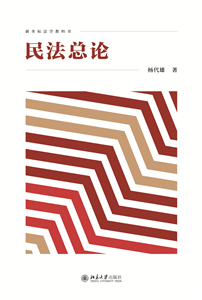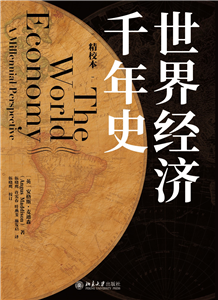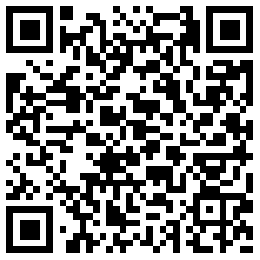基本信息 Information

第二语言习得导论(英文版)(第二版)
Contents
Chapter 1 Introduction: Key Concepts and Issues in SLA …………………1
1.1 Language Acquisition and SLA ………………………………1
1.2 Some Definitions of SLA ……………………………………2
1.3 Some Structural Characteristics of SLA ………………………3
1.4 The Literature on the Theories of SLA ………………………5
1.5 A Theoretical Approach Proposed by Spolsky ………………6
1.6 A Five-staged Model of SLA by Gass ………………………8
1.7 Theoretical Applications to L2 Teaching and Learning ………9
1.8 Some Distinctions in the Field of SLA Research ……………10
1.9 Conclusion ……………………………………………………17
Chapter 2 Views on Language, Learning and Learner ……………………20
2.1 Views on the Nature of Language ……………………………20
2.2 Views of the Language Learning Process – L1 Versus L2 ……25
2.3 Views of the Second Language Learner ………………………34
2.4 Conclusion ……………………………………………………40
Chapter 3 An Introduction to Language Acquisition ………………………42
3.1 Introduction ……………………………………………………42
3.2 Developmental Patterns in L1 Acquisition ……………………42
3.3 The Controversy Between Behaviorist and Mentalist Models …51
3.4 Developmental Patterns in L2 Acquisition …………………53
3.5 Conclusion ……………………………………………………62
Chapter 4 Recent History of SLA Research ………………………………… 64
4.1 Introduction …………………………………………………… 64
4.2 The Early Studies on Language Acquisition (to 1960s) ……… 65
4.3 The Following-up Studies in the 1970s and 1980s …………… 70
4.4 The Recent Studies on L2A (beyond 1990s) ………………… 78
4.5 Conclusion …………………………………………………… 81
Chapter 5 The UG Approach to Language Acquisition …………………… 83
5.1 Introduction …………………………………………………… 83
5.2 UG for Language Acquisition ………………………………… 83
5.3 Arguments from L1 Acquisition ……………………………… 88
5.4 What Does UG Consist of ? ………………………………… 92
5.5 Evaluation of UG-based Approaches to SLA ………………… 95
5.6 Conclusion …………………………………………………… 98
Chapter 6 Cognitive Approaches to SLA ………………………………… 101
6.1 Introduction ………………………………………………… 101
6.2 Two Main Groups of Cognitive Theorists ………………… 102
6.3 Processing Approaches …………………………………… 103
6.4 Connectionism ………………………………………………110
6.5 Theories of L2 Processing ……………………………………112
6.6 Evaluation of Cognitive Approaches to L2 Learning …………115
6.7 Conclusion ……………………………………………………117
Chapter 7 Some Other Perspectives on SLA …………………………………119
7.1 Introduction ……………………………………………………119
7.2 Functional Perspectives on L1 Learning and SLA ……………119
7.3 Functionalist Contributions to an Understanding of SLA … 122
7.4 Sociocultural Perspectives on SLA ………………………… 124
7.5 Sociolinguistic Perspectives on SLA ……………………… 129
7.6 Conclusion ………………………………………………… 134
Chapter 8 Input, Interaction and Output in SLA………………………… 136
8.1 Introduction ………………………………………………… 136
8.2 Input and Interaction in L1 Acquisition …………………… 137
8.3 Input and Interaction in SLA ……………………………… 138
8.4 Output in SLA ……………………………………………… 144
8.5 Theorizing Input, Interaction and Output Research ……… 146
8.6 Feedback, Recasts and Negative Evidence in SLA ……… 148
8.7 Evaluation: the Scope of Interactionist Research ………… 152
8.8 Conclusion ………………………………………………… 153
Chapter 9 Varied Perspectives on Interlanguage ………………………… 155
9.1 An Introduction to Interlanguage ………………………… 155
9.2 Social Aspects of IL ……………………………………… 157
9.3 Discourse Aspects of IL …………………………………… 160
9.4 Psycholinguistic Aspects of IL …………………………… 166
9.5 Conclusion ………………………………………………… 175
Chapter 10 L2 Teaching Approaches from CLT to TBLT ………………… 177
10.1 The Distinction of Language Teaching Approaches and
Methods ………………………………………………… 177
10.2 The Communicative Approach and CLT in SLA Studies … 183
10.3 The TBLT and TBLL in SLA Studies …………………… 191
10.4 Conclusion ……………………………………………… 199
Chapter 11 The SLA Research on Teaching Four Language Skills ……… 202
11.1 The Connection of Four Language Skills and Language
Work ……………………………………………………… 202
11.2 Receptive Skills and Productive Skills Among the Four
Language Skills ………………………………………… 203
11.3 Integrating the Four Skills in a Language Classroom …… 209
11.4 Balancing and Integrating the Four Language Skills …… 216
11.5 Pedagogical Principles and the Four Language Skills …… 218
11.6 Conclusion ……………………………………………… 219
Chapter 12 An Introduction to Teaching Four Language Skills ………… 221
12.1 A Framework of CC Integrating the Four Skills ………… 221
12.2 Teaching L2 Listening …………………………………… 223
12.3 Teaching L2 Reading …………………………………… 228
12.4 Teaching L2 Speaking …………………………………… 233
12.5 Teaching Writing ………………………………………… 238
12.6 Conclusion ……………………………………………… 242
Chapter 13 Researches on L2 Classroom Practice (I) …………………… 244
13.1 Introduction ……………………………………………… 244
13.2 An Introduction to the History of L2 Teaching Methods … 246
13.3 Cross-language Competition Between L1 and L2 ……… 249
13.4 Some Methods Used in L2 Classroom Research ………… 251
13.5 Data Collection and Data Analysis ……………………… 256
13.6 Conclusion ……………………………………………… 261
Chapter 14 Researches on L2 Classroom Practice (II) …………………… 263
14.1 Direct Involvement of Classroom Interaction Research … 263
14.2 An Introduction to Classroom Interaction ……………… 263
14.3 Types of Language Use in Classroom Interaction ……… 267
14.4 Turn-taking in Classroom Discourse …………………… 269
14.5 Differences Between Classroom and Naturalistic Discourse … 270
14.6 The Teacher’s Role in Classroom Interaction …………… 271
14.7 Learner Participation ……………………………………… 275
14.8 Classroom Interaction in the L2 Learning ……………… 276
14.9 The Relationship Between Classroom Interaction and SLA … 279
14.10 Conclusion ……………………………………………… 280
Chapter 15 Conclusion ……………………………………………………… 283
15.1 A Brief Review of the Book ……………………………… 283
15.2 An Integrated View of SLA Research …………………… 284
15.3 Main Achievements of Recent SLA Studies ……………… 285
15.4 SLA Research and Language Education ………………… 287
15.5 Future Directions for SLA Research ……………………… 289
REFERENCES ………………………………………………………………… 293
Chapter 1 Introduction: Key Concepts and Issues in SLA …………………1
1.1 Language Acquisition and SLA ………………………………1
1.2 Some Definitions of SLA ……………………………………2
1.3 Some Structural Characteristics of SLA ………………………3
1.4 The Literature on the Theories of SLA ………………………5
1.5 A Theoretical Approach Proposed by Spolsky ………………6
1.6 A Five-staged Model of SLA by Gass ………………………8
1.7 Theoretical Applications to L2 Teaching and Learning ………9
1.8 Some Distinctions in the Field of SLA Research ……………10
1.9 Conclusion ……………………………………………………17
Chapter 2 Views on Language, Learning and Learner ……………………20
2.1 Views on the Nature of Language ……………………………20
2.2 Views of the Language Learning Process – L1 Versus L2 ……25
2.3 Views of the Second Language Learner ………………………34
2.4 Conclusion ……………………………………………………40
Chapter 3 An Introduction to Language Acquisition ………………………42
3.1 Introduction ……………………………………………………42
3.2 Developmental Patterns in L1 Acquisition ……………………42
3.3 The Controversy Between Behaviorist and Mentalist Models …51
3.4 Developmental Patterns in L2 Acquisition …………………53
3.5 Conclusion ……………………………………………………62
Chapter 4 Recent History of SLA Research ………………………………… 64
4.1 Introduction …………………………………………………… 64
4.2 The Early Studies on Language Acquisition (to 1960s) ……… 65
4.3 The Following-up Studies in the 1970s and 1980s …………… 70
4.4 The Recent Studies on L2A (beyond 1990s) ………………… 78
4.5 Conclusion …………………………………………………… 81
Chapter 5 The UG Approach to Language Acquisition …………………… 83
5.1 Introduction …………………………………………………… 83
5.2 UG for Language Acquisition ………………………………… 83
5.3 Arguments from L1 Acquisition ……………………………… 88
5.4 What Does UG Consist of ? ………………………………… 92
5.5 Evaluation of UG-based Approaches to SLA ………………… 95
5.6 Conclusion …………………………………………………… 98
Chapter 6 Cognitive Approaches to SLA ………………………………… 101
6.1 Introduction ………………………………………………… 101
6.2 Two Main Groups of Cognitive Theorists ………………… 102
6.3 Processing Approaches …………………………………… 103
6.4 Connectionism ………………………………………………110
6.5 Theories of L2 Processing ……………………………………112
6.6 Evaluation of Cognitive Approaches to L2 Learning …………115
6.7 Conclusion ……………………………………………………117
Chapter 7 Some Other Perspectives on SLA …………………………………119
7.1 Introduction ……………………………………………………119
7.2 Functional Perspectives on L1 Learning and SLA ……………119
7.3 Functionalist Contributions to an Understanding of SLA … 122
7.4 Sociocultural Perspectives on SLA ………………………… 124
7.5 Sociolinguistic Perspectives on SLA ……………………… 129
7.6 Conclusion ………………………………………………… 134
Chapter 8 Input, Interaction and Output in SLA………………………… 136
8.1 Introduction ………………………………………………… 136
8.2 Input and Interaction in L1 Acquisition …………………… 137
8.3 Input and Interaction in SLA ……………………………… 138
8.4 Output in SLA ……………………………………………… 144
8.5 Theorizing Input, Interaction and Output Research ……… 146
8.6 Feedback, Recasts and Negative Evidence in SLA ……… 148
8.7 Evaluation: the Scope of Interactionist Research ………… 152
8.8 Conclusion ………………………………………………… 153
Chapter 9 Varied Perspectives on Interlanguage ………………………… 155
9.1 An Introduction to Interlanguage ………………………… 155
9.2 Social Aspects of IL ……………………………………… 157
9.3 Discourse Aspects of IL …………………………………… 160
9.4 Psycholinguistic Aspects of IL …………………………… 166
9.5 Conclusion ………………………………………………… 175
Chapter 10 L2 Teaching Approaches from CLT to TBLT ………………… 177
10.1 The Distinction of Language Teaching Approaches and
Methods ………………………………………………… 177
10.2 The Communicative Approach and CLT in SLA Studies … 183
10.3 The TBLT and TBLL in SLA Studies …………………… 191
10.4 Conclusion ……………………………………………… 199
Chapter 11 The SLA Research on Teaching Four Language Skills ……… 202
11.1 The Connection of Four Language Skills and Language
Work ……………………………………………………… 202
11.2 Receptive Skills and Productive Skills Among the Four
Language Skills ………………………………………… 203
11.3 Integrating the Four Skills in a Language Classroom …… 209
11.4 Balancing and Integrating the Four Language Skills …… 216
11.5 Pedagogical Principles and the Four Language Skills …… 218
11.6 Conclusion ……………………………………………… 219
Chapter 12 An Introduction to Teaching Four Language Skills ………… 221
12.1 A Framework of CC Integrating the Four Skills ………… 221
12.2 Teaching L2 Listening …………………………………… 223
12.3 Teaching L2 Reading …………………………………… 228
12.4 Teaching L2 Speaking …………………………………… 233
12.5 Teaching Writing ………………………………………… 238
12.6 Conclusion ……………………………………………… 242
Chapter 13 Researches on L2 Classroom Practice (I) …………………… 244
13.1 Introduction ……………………………………………… 244
13.2 An Introduction to the History of L2 Teaching Methods … 246
13.3 Cross-language Competition Between L1 and L2 ……… 249
13.4 Some Methods Used in L2 Classroom Research ………… 251
13.5 Data Collection and Data Analysis ……………………… 256
13.6 Conclusion ……………………………………………… 261
Chapter 14 Researches on L2 Classroom Practice (II) …………………… 263
14.1 Direct Involvement of Classroom Interaction Research … 263
14.2 An Introduction to Classroom Interaction ……………… 263
14.3 Types of Language Use in Classroom Interaction ……… 267
14.4 Turn-taking in Classroom Discourse …………………… 269
14.5 Differences Between Classroom and Naturalistic Discourse … 270
14.6 The Teacher’s Role in Classroom Interaction …………… 271
14.7 Learner Participation ……………………………………… 275
14.8 Classroom Interaction in the L2 Learning ……………… 276
14.9 The Relationship Between Classroom Interaction and SLA … 279
14.10 Conclusion ……………………………………………… 280
Chapter 15 Conclusion ……………………………………………………… 283
15.1 A Brief Review of the Book ……………………………… 283
15.2 An Integrated View of SLA Research …………………… 284
15.3 Main Achievements of Recent SLA Studies ……………… 285
15.4 SLA Research and Language Education ………………… 287
15.5 Future Directions for SLA Research ……………………… 289
REFERENCES ………………………………………………………………… 293












